Differences Between Narrowband Filters, Broadband Filters, and Multiband Filters: SV220, SV260, and SV240
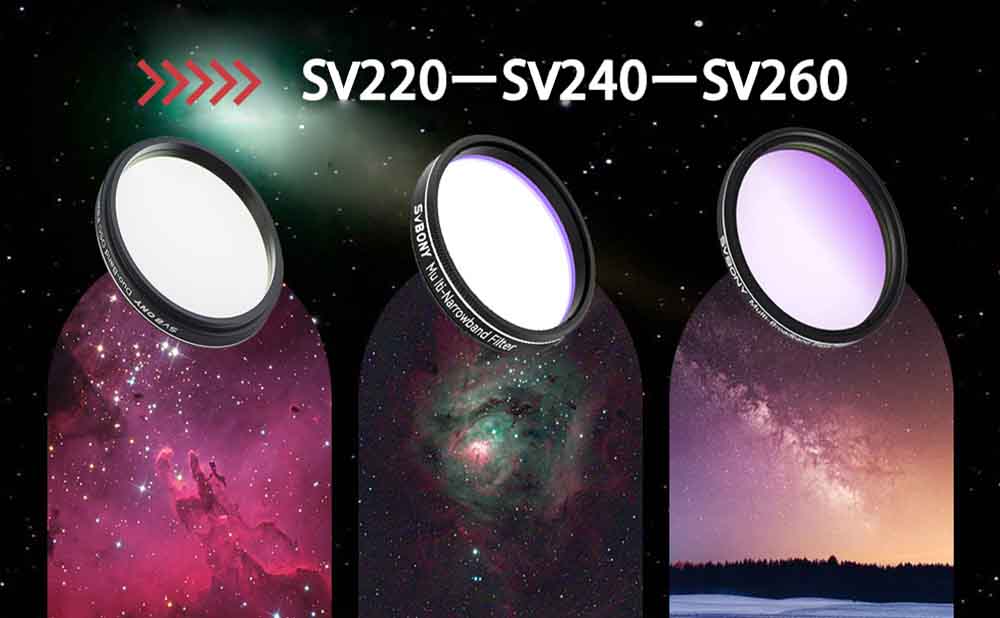
Differences Between Narrowband Filters, Broadband Filters, and Multiband Filters: SV220, SV260, and SV240
Overview of Telescope Filters
Filters play a crucial role in astrophotography and visual observation by allowing specific wavelengths of light to pass while blocking others. The main types of filters include:
-
Narrowband Filters
- Definition - Narrowband filters allow light to pass through within a very specific wavelength range, typically very narrow (e.g., a few nanometers).
- Applications - Commonly used in astronomical observations, particularly for capturing images of emission nebulae such as Hα (656.3 nm) and OIII (500.7 nm).
- Advantages - Due to their high selectivity, they can capture target objects even in conditions with significant background light pollution, enhancing image contrast and detail.
- Disadvantages - Their application is somewhat limited, primarily targeting specific celestial objects.
- For instance, Svbony SV227 SHO narrowband filter allows only light around the ha(656.3nm) oiii(500.7nm) sii(672nm) range to pass through, effectively enhancing contrast in images.
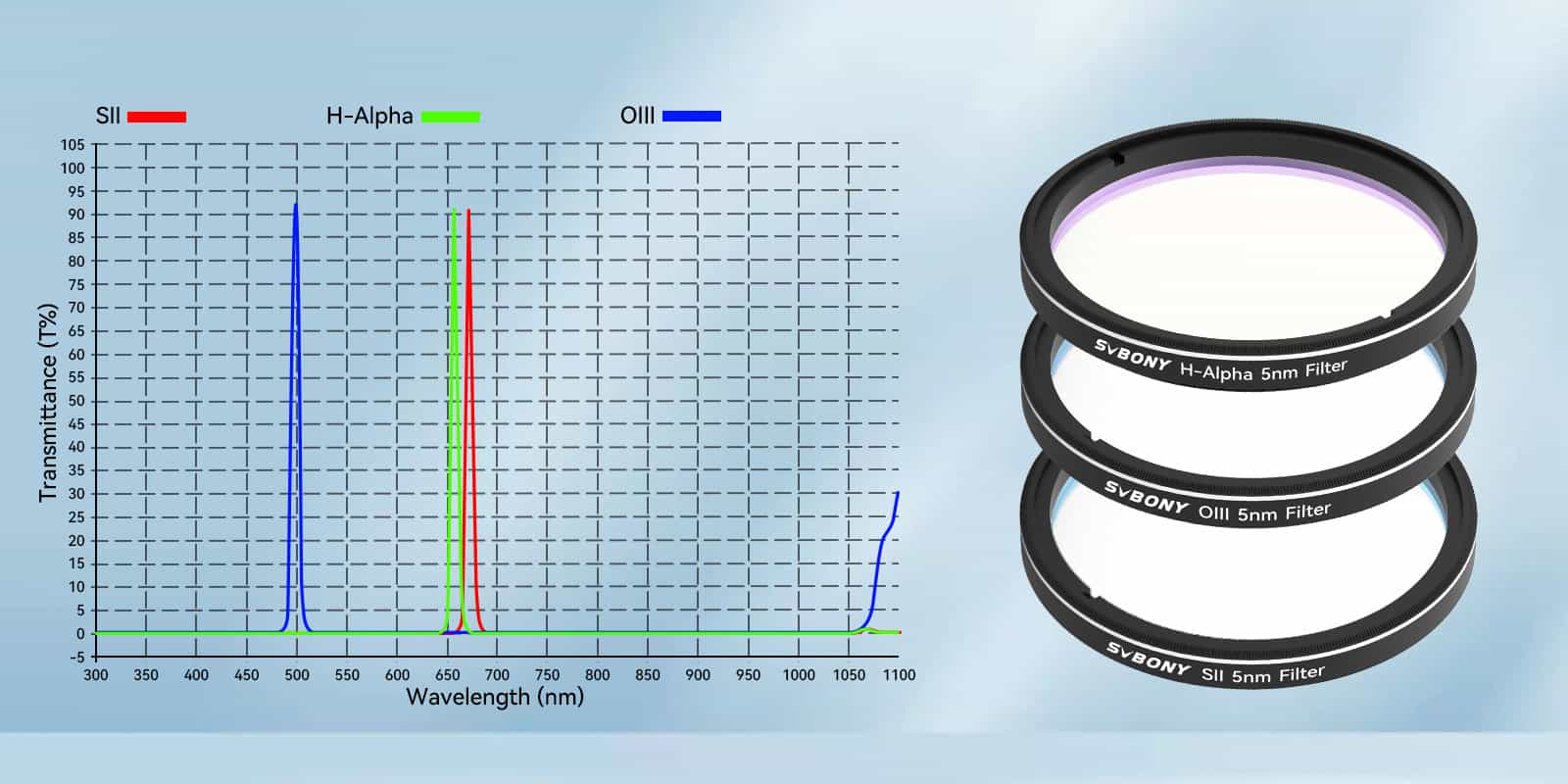
-
Broadband Filters
- Definition - Broadband filters allow a wider range of wavelengths to pass through, generally covering dozens to hundreds of nanometers in the spectrum.
- Applications - Typically suitable for nearly all astronomical objects, making them ideal for general stargazing and imaging.
- Advantages - They can capture more light information, providing flexibility for various observational scenarios.
- Disadvantages - In heavily light-polluted environments, they may struggle to isolate the target signal effectively.
For example, the uv-ir cut filter operates across hundreds of nanometers, qualifying it as a broadband filter. Also the new released SV260 Multi-Broadband filter properly designed for starfield shooting and deep sky photography, enhance stars and celestial bodies details; making deep sky observations clearer.
-
Multiband Filters
- Definition - Multiband filters can simultaneously allow multiple specific wavelength ranges of light to pass while suppressing other wavelengths.
- Applications - Suitable for capturing or observing phenomena that require multiple signals across different wavelengths, especially in urban environments with light pollution.
- Advantages - They provide better performance across different astronomical phenomena, such as galaxies and reflection nebulae, and are broadly applicable.
- Disadvantages - Their selectivity for each band may not be as strong as that of narrowband filters, potentially leading to some loss of specific signals.
For instance, the SV240 multiband filter enables precise selection and transmission of desired light communication frequencies.
How to Choose Between SV220, SV240 and SV260 Filter
When choosing a filter, key considerations include bandwidth, performance, and intended usage scenarios.
Target Observation
Narrowband filters are particularly useful for observing specific astronomical objects, such as planetary nebulae or emission nebulae, by isolating certain wavelengths of light (e.g., Hα, OIII). In contrast, broadband filters are versatile and applicable to almost all celestial objects, making them ideal for general stargazing and imaging.
Imaging Characteristics
Using a narrowband filter enhances image contrast and captures a greater number of stars, which facilitates easier observation of faint objects. For example, using the SV227 OIII and Hα filters with an astronomical camera can yield detailed images of emission nebulae.
- SV220 Dual Narrowband Filter: This filter targets specific wavelengths near OIII (500.7 nm) and Hα (656.3 nm), maximizing signal capture from nebulae while darkening the sky background. It is ideal for high-resolution optical applications, particularly for astrophotographers focusing on emission nebulae.
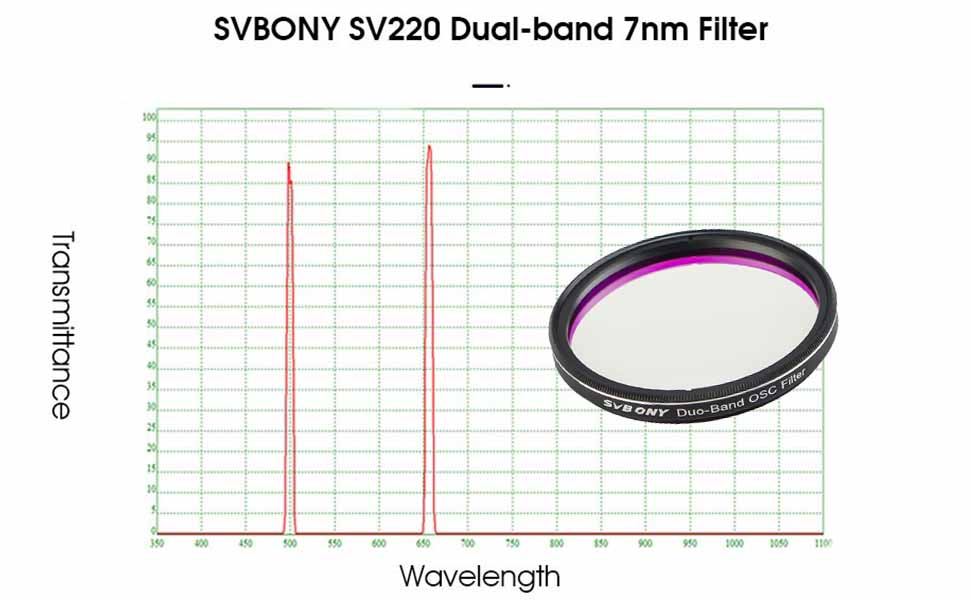
- SV240 Multi-Narrowband Filter: Highly efficient in blocking urban light pollution or other background light; use this multi-bandpass SV240 filter for astrophotography in urban with significant light pollution such as Bortle 7 or 8, no need to travel long distances to the suburbs. It can block the influence of urban light pollution and other background lights efficiently. SV240 excels in optical imaging and color image acquisition. It improves image quality during long exposures, making it suitable for photographing galaxies and reflection nebulae with the transmittance in the wavelength range of 300 nm to 1100 nm.
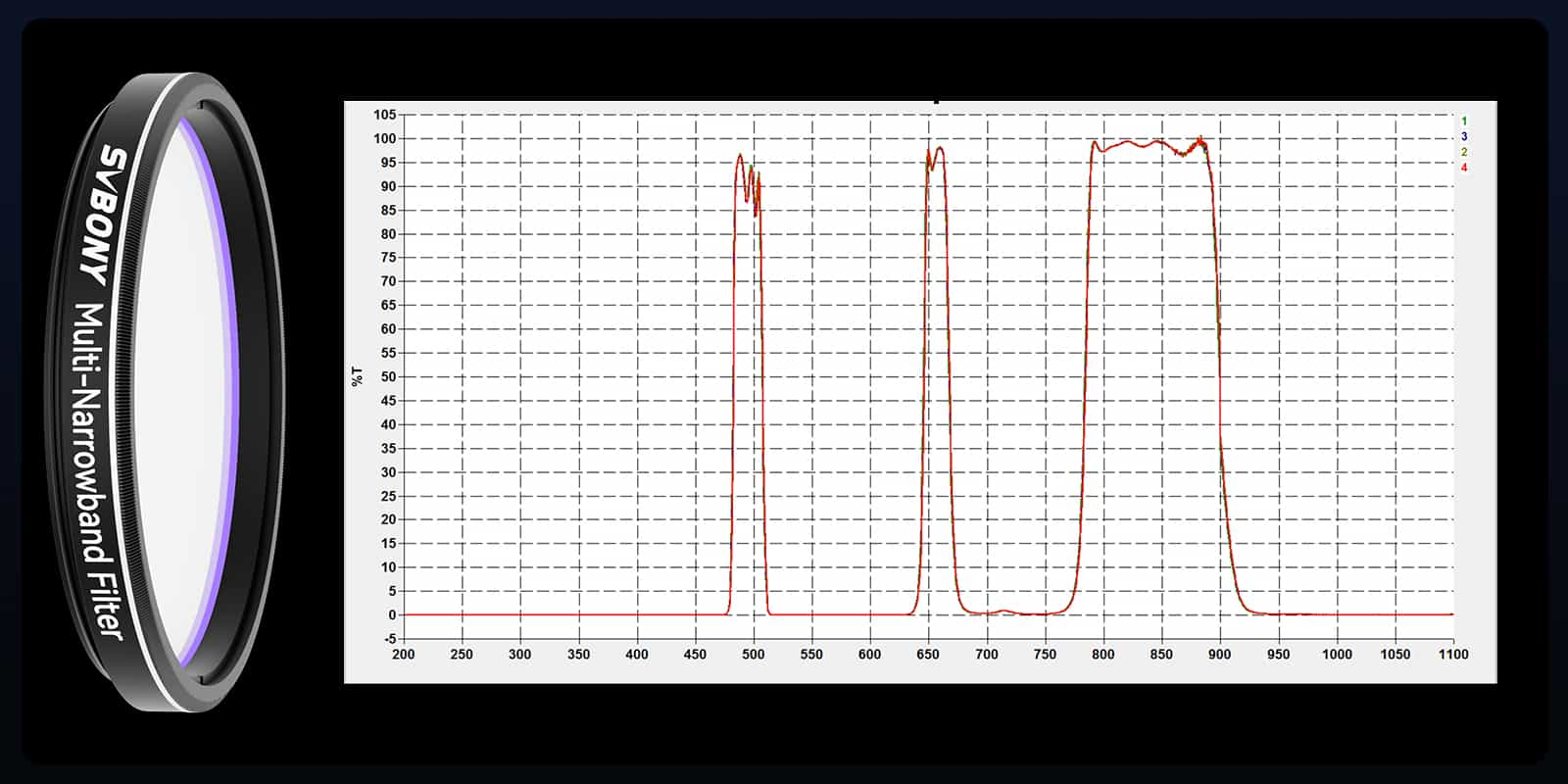
- SV260 Multiband Filter: While it offers less light pollution suppression compared to the SV240, the SV260 features increased UV/IR cutoff functionality. It maximizes light transmission range with minimal chromatic aberration, making it effective for capturing images of various celestial bodies, including galaxies and star clusters. Suitable for large-scale astronomical observations, it is often referred to as a "starfield filter."
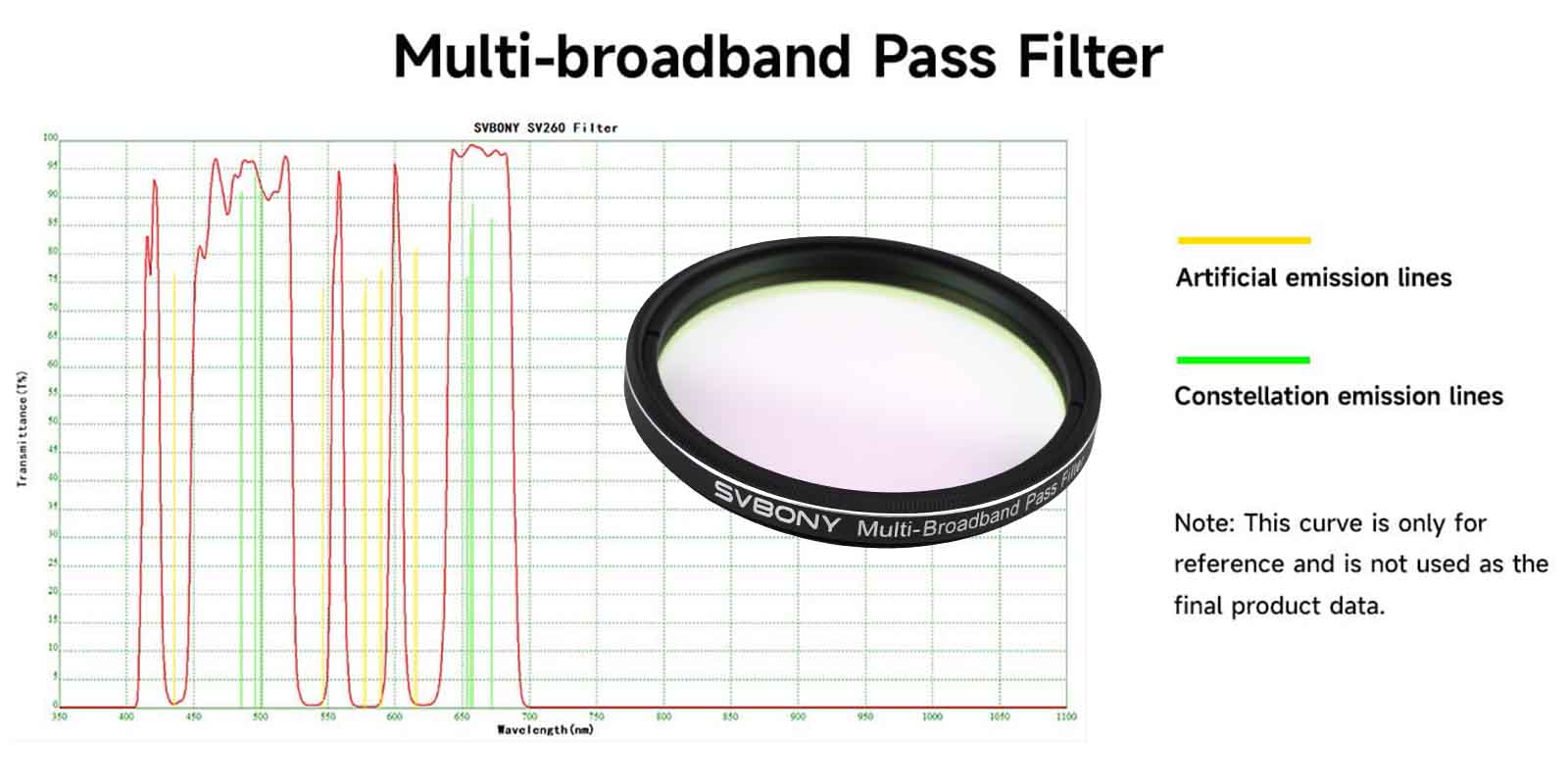
Summary
- Narrowband Filters - Focus on specific wavelengths, ideal for high-contrast imaging.
- Broadband Filters - Suitable for a wide range of applications, capable of capturing various astronomical objects' light.
- Multiband Filters - Handle multiple wavelengths simultaneously, helping to obtain clear images in complex light environments.
Each of these imaging filters serves unique purposes in the realm of astrophotography and observation. Whether you’re targeting specific celestial phenomena or seeking versatility in your imaging gear, there’s an astro filter that fits your needs. Choosing the appropriate photography filter based on your needs can significantly enhance the quality of observation and imaging.
Thank you for reading! We hope this information helps you make informed choices in your astrophotography journey.








